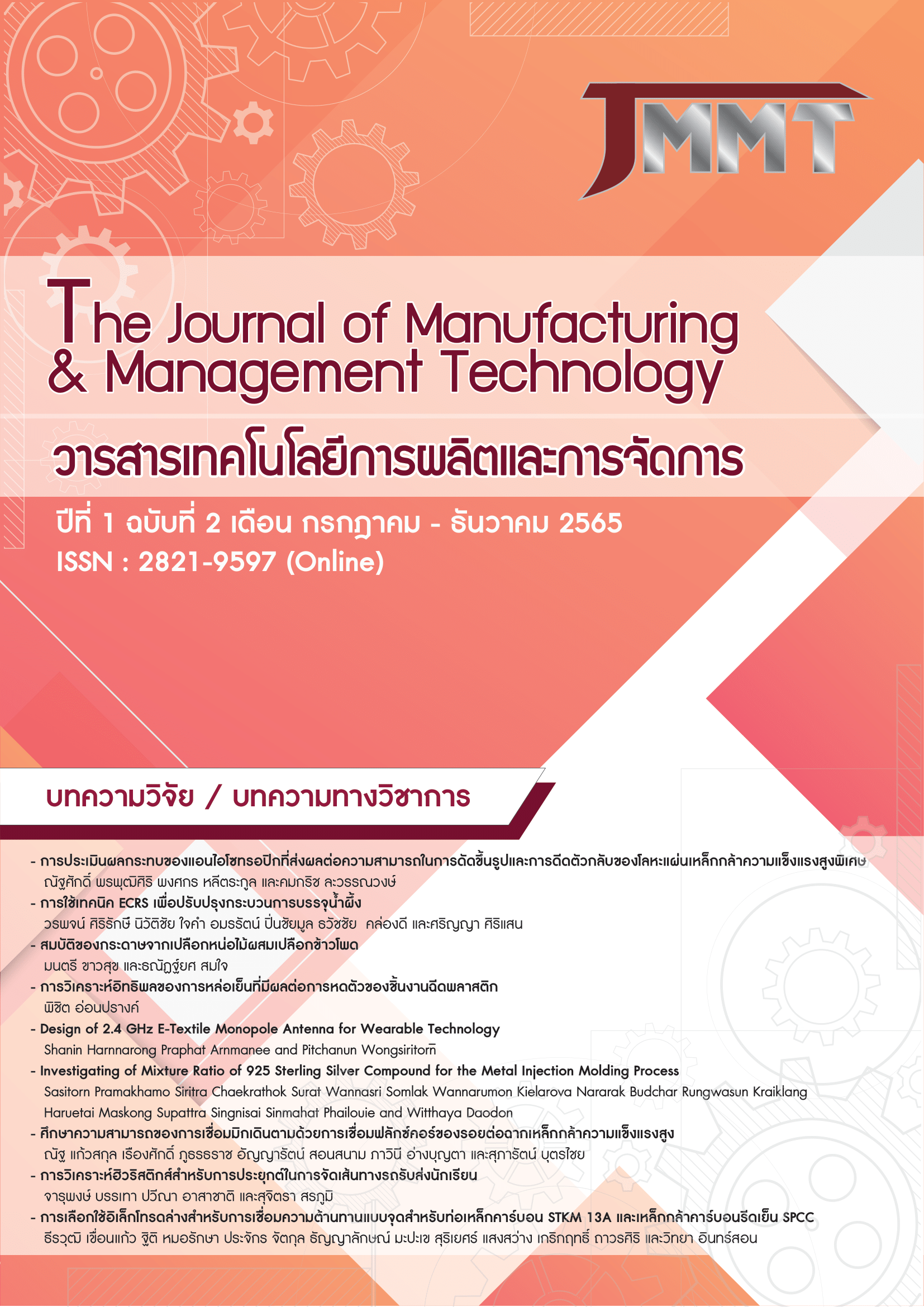Study of Weldability of MIG Welding Tandem FCAW on Fillet Joint of High Strength Steel
Keywords:
Welding Deposition Rate, High Strength Steel, Penetration, welding MicrostructureAbstract
This research study aims to find the welding deposition rate of Gas Metal Arc Welding (GMAW) tandem Flux Core Arc Welding (FCAW) of Quenched and Tempered High Strength Steel. To study the effected of welding condition as the welding current of lead solid wire electrode and tandem with flux core wire electrode. By determined the first weld condition with low welding current of lead electrode and high welding current tandem electrode, the second condition weld with high welding current of lead electrode and low welding current tandem electrode and the last condition weld with equal welding current of lead and tandem electrode respectively. To compare the welding deposition rate, relate with the welding current of lead and tandem electrode and inspection of weld quality as weld profile, penetration, width of weld and compare the mechanical test with microstructure. The experimental procedure preparation of base metal is quench and tempered high strength steel has the dimension of width 100 mm long 380 mm and thickness 10 mm. Use the solid wire electrode ER100S-G diameter 1.2 mm and flux core wire E111T1-GC H4 diameter 1.2 mm. Welding speed 34 cm/min, electrode extension 15 mm and inter distance between leading electrode with tandem is 10 mm. The result shows the highest of weld deposition occur from the high welding current of leading electrode as 270 Ampere and tandem electrode welding current as 250 Ampere and produce the high deposition rate as 9.569 Kg/hr. The welding deposition rate of the condition high welding current leading electrode (GMAW) and low welding current tandem electrode (FCAW) can produce the high deposition rate more than welding condition as low welding current of leading electrode and high welding current electrode as 108.22 %, and high deposition rate more than welding condition equal welding current of leading and tandem electrode as 148% respectively. The weld quality of welding condition with high welding current leading electrode and low welding current tandem electrode provided the complete fusion of fillet weld and complete penetration. The weld microstructure of the base metal show as bainite structure and the heat affected zone consist of the matrix of ferrite grain and the small pearlite phase on the grainboundary, the weld metal zone has the fine grain structure.
Downloads
Published
How to Cite
Issue
Section
License
Copyright Notice articles, information, images, etc. was published in this Journal of Manufacturing and Management Technology is a copyright of the Journal of Manufacturing and Management Technology. If any person or deparment wants to bring all or part of it for publish or take any action. Authorization is required in written form from the Journal of Manufacturing and Management Technology only.



